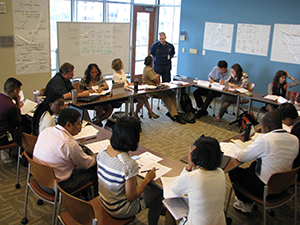EIS Case Studies

Epidemic Intelligence Service (EIS) Officers learn applied epidemiology through a CDC case study.
Case Studies in Applied Epidemiology
CDC developed case studies in applied epidemiology based on real-life epidemiologic investigations and used them for training new Epidemic Intelligence Service (EIS) officers — CDC’s “disease detectives.” EIS offers these carefully crafted epidemiology case studies for schools of medicine, nursing, and public health to use as a component of an applied epidemiology curriculum.
The following case studies use specific examples to teach epidemiology concepts, require active participation, and help strengthen problem-solving skills. These case studies in applied epidemiology:
Cover epidemiologic basics, including:
- Outbreak investigation
- Surveillance
- Study design
- Data interpretation
- Descriptive and analytic methods
Are based on public health investigations of:
- Infectious diseases
- Chronic illnesses
- Environmental health
Instructor and Student Guides
Each EIS Case Study consists of an instructor guide or a student guide.
- Instructors or trainers (not students): ask for Applied Epidemiology Applied Epidemiology Case Studies instructors’ guides. Send an e-mail to: EISoperations@cdc.gov and label subject line: “Case Study Instructor Guide Request”.
- Students: Use Adobe Acrobat reader, to view or print the student guides.
How to Use the EIS Case Studies
Students may practice their epidemiologic skills by using these exercises in classroom activities or as homework assignments to reinforce principles and skills previously covered in lectures and reading assignments.
- In-Class Activity
Students, read the case study up to the first question and then perform calculations, construct graphs, or discuss the answer. Students may be asked to play different roles in answering the question. After discussing the first answer satisfactorily, read on to the next question and continue with the exercise. - Individual Activity
Students, for a homework assignment, read the case study and answer the questions, then discuss the findings in class.